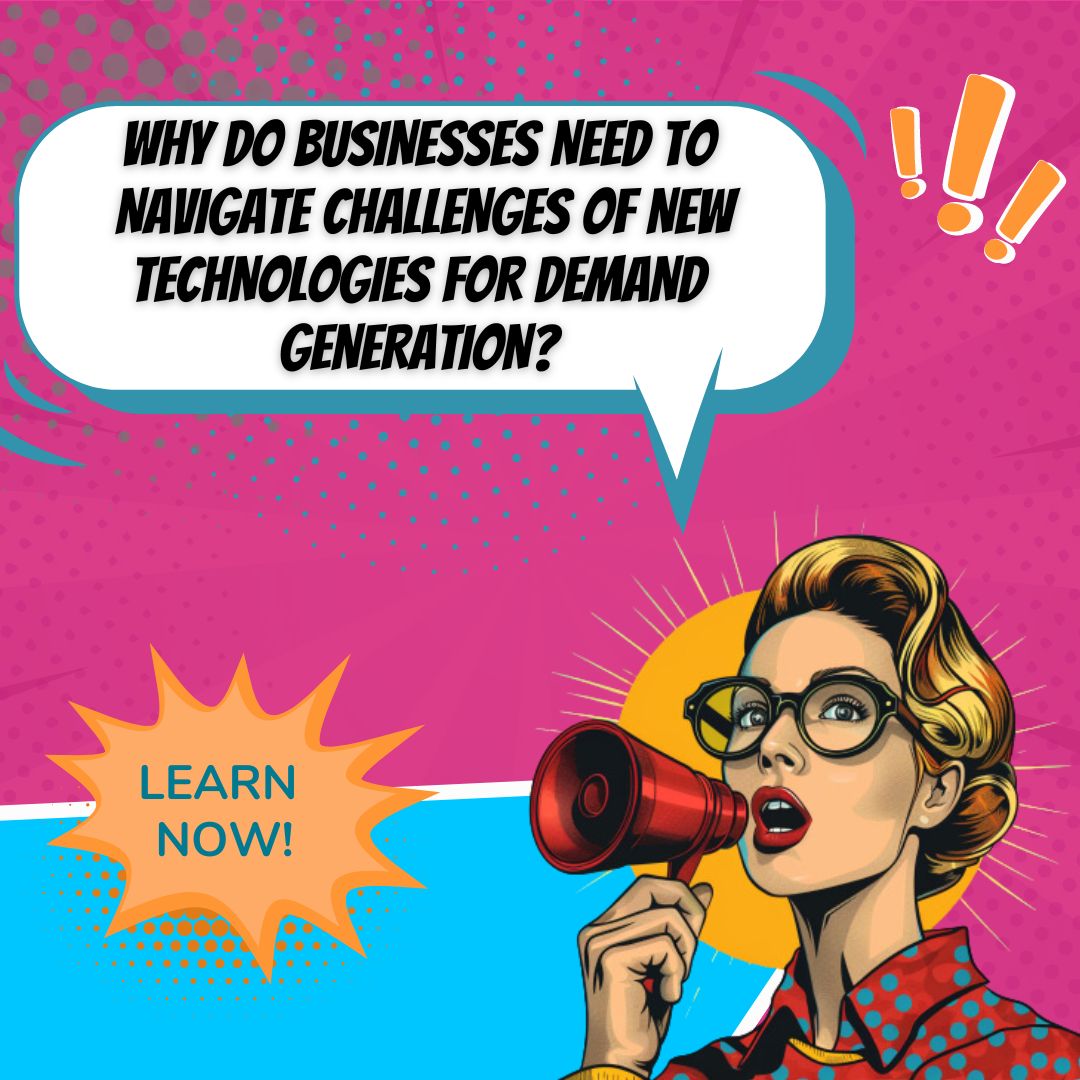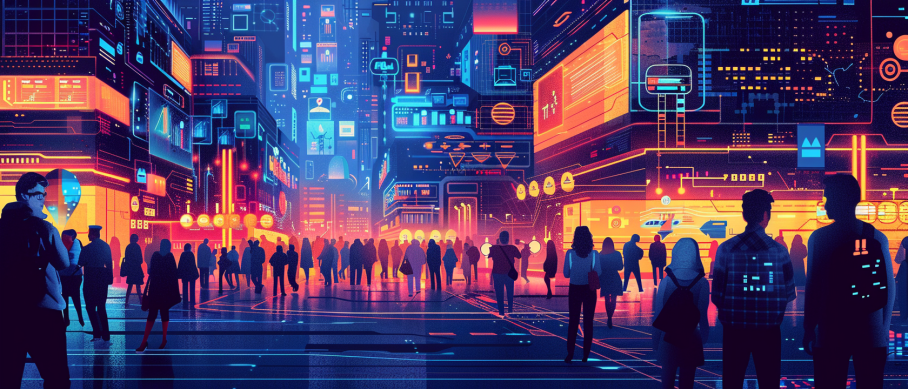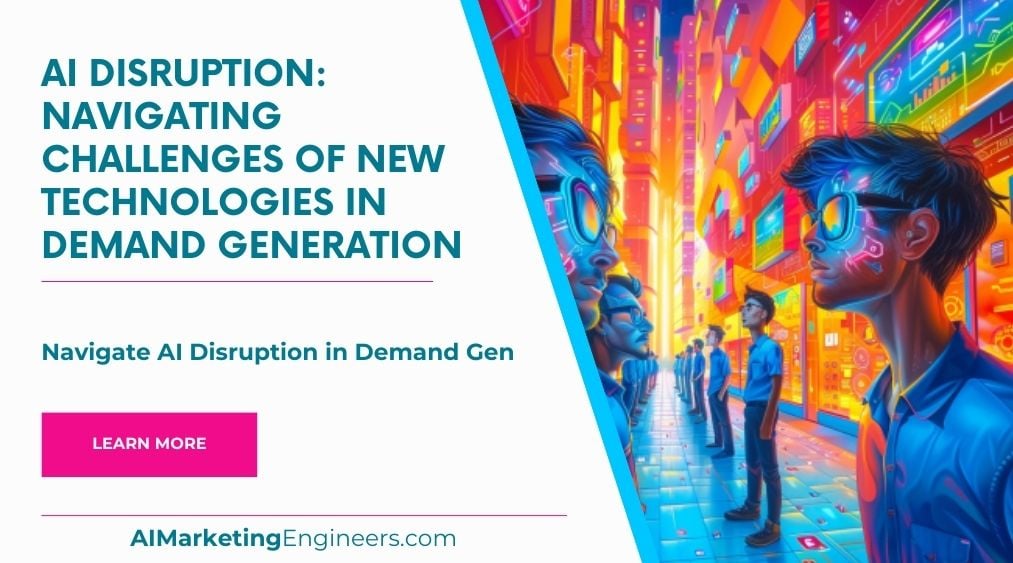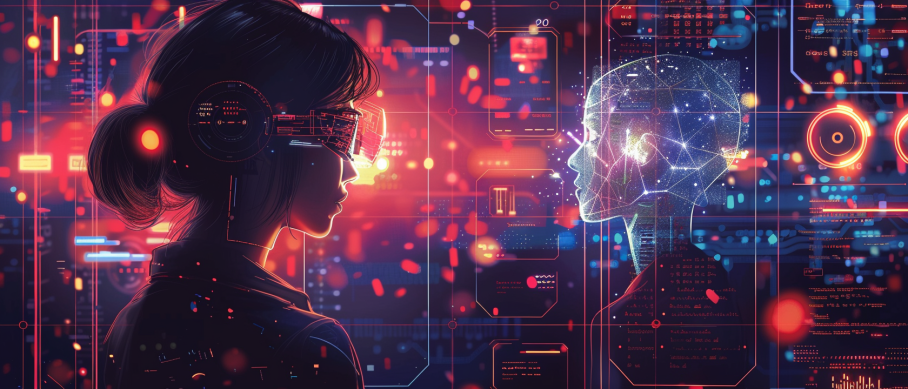Key Takeaways
✅ Integration and Adaptation Challenges: Embracing AI in demand generation brings its set of challenges, notably integrating AI into existing marketing infrastructures. This process can be daunting due to the complexity and the required shift in organizational mindset. A survey by Deloitte found that 47% of businesses cite integration as a significant barrier to AI adoption. To navigate this, companies need a solid plan for overcoming resistance and blending AI smoothly with human-driven processes.
✅ Data Management and Ethical Considerations: Data is the lifeblood of AI, but its acquisition and use come with privacy and ethical challenges. With 34% of consumers wary of personal data misuse, according to a Pew Research Center study, businesses must tread carefully. Ensuring high-quality data management and adhering strictly to ethical guidelines is non-negotiable for gaining trust and maximizing the potential of AI in demand generation.
✅ Navigating the Disruption: The disruption caused by AI and machine learning (ML) technologies has reshaped the B2B marketing landscape, demanding marketers to distinguish between genuine innovation and temporary trends. About 69% of B2B marketers surveyed by Statista reported that staying ahead of AI advancements is their top priority for maintaining competitive edge. Businesses can adapt by seeking partnerships, focusing on internal skill development, and leveraging AI expertise to fill talent gaps.

Introduction
Is AI merely a buzzword, or is it the powerhouse set to redefine demand generation as we know it? The rapid adoption of AI has propelled businesses into an era where navigating through its opportunities and challenges is indispensable. With AI's pervasive impact, understanding how to blend it seamlessly into your marketing strategies can turn potential disruptions into substantial competitive advantages. But, as promising as it sounds, integrating AI into demand generation comes with its fair set of complexities. From ethical dilemmas surrounding data usage to ensuring the human touch remains integral in marketing efforts, the challenges are as real as the opportunities.
As we delve deeper, this article aims to not only chart the landscape of AI in demand generation but also to empower you with practical insights and strategies to harness its potential. Whether it's leveraging AI for more personalized customer experiences or navigating the challenges of data management, the insights shared here promise to equip you with the knowledge needed to stay ahead in an increasingly AI-driven market. Get ready to uncover actionable recommendations that will not only help you sail through the AI disruption but also unlock new avenues for growth and innovation in demand generation.
Top Statistics
| Statistic | Insight |
|---|---|
| Global enterprise spending on generative AI: Approximately $15 billion in 2023. | This massive investment underlines the importance and rapid integration of generative AI solutions into business processes, setting a significant benchmark in the enterprise software market. |
| Digital transformation in B2B marketing: Surge in adoption of AI and ML in 2023. | Shows how quickly B2B marketers are embracing AI and ML technologies, indicating a pivotal shift in strategies to include more automated, efficient, and data-driven approaches. |
| Streamlined integration and lower switching costs: A notable impact of gen AI technology. | These advancements could level the playing field for startups, making it easier for new businesses to compete with established players by reducing entry and operational costs. |
| Pressures on B2B marketing budgets: Increasing demands for instant ROI. | This reflects the growing scrutiny over marketing investments and the need for strategies that deliver quick and measurable returns, a challenge that AI and ML could potentially address by optimizing marketing efficiency. |
| Potential for a $300 billion growth: Seismic shift in software spending due to gen AI adoption. | Anticipates a considerable market expansion, suggesting that businesses who leverage generative AI effectively could seize significant opportunities in the evolving software landscape. |
The Rise of AI in Demand Generation
The landscape of demand generation is rapidly evolving, chiefly due to the accelerated adoption of AI. Its potential to reshape this sector is immense, promising to make marketing strategies more efficient and customer interactions more personalized. Recent figures suggest a meteoric rise in AI adoption, with some studies indicating that over 60% of businesses are now leveraging some form of AI, nearly doubling the figures from just two years ago. This growth points to AI's significant impact on the market, driving both innovation and competition across industries. Such statistics are not just numbers; they're a testament to AI's transformative power in understanding and engaging with potential customers at an unprecedented scale and depth.
Challenges in Implementing AI in Demand Generation
Implementing AI in demand generation is not without its hurdles. Companies often underestimate the complexity of integrating AI technologies, facing obstacles such as IT deficiencies and the need for strategic resource reallocation. A survey by a leading tech consultant firm revealed that nearly 45% of businesses struggle with inadequate IT infrastructure, which hampers their AI initiatives. Furthermore, embarking on the AI journey requires more than just financial investment; it demands a shift in mindset and culture within organizations to embrace data-driven decision-making. These challenges necessitate not just technical upgrades but also a strategic overhaul for companies to successfully harness the power of AI in demand generation.
Strategic Approaches to AI Adoption
For businesses to thrive with AI, adopting a methodical and strategic approach is crucial. Developing a comprehensive transformation roadmap that clearly defines short-term and long-term goals can set the stage for success. Prioritizing use cases based on their impact and feasibility helps in creating quick wins and long-term value. Equally important is establishing robust governance structures to oversee AI initiatives, ensuring they adhere to ethical standards and regulatory requirements. This approach, coupled with fostering cross-functional collaboration, prepares the ground for a smoother integration of AI, facilitating a culture that leverages technology for innovation and growth.

Use Cases for AI in Demand Generation
AI's application in demand generation is vast and varied, ranging from crafting personalized content strategies to employing predictive analytics for better targeting. Companies are now using AI to automate routine tasks, allowing marketing teams to focus on strategic thinking and creative processes. For example, a leading e-commerce platform utilized AI to analyze customer behavior, resulting in a 30% increase in conversion rates. Such case studies underscore the efficiency and effectiveness of AI in enhancing campaign strategies, reducing costs, and improving customer experiences, thereby driving substantial business growth.
Addressing IT Deficiencies and Building Trust
A successful AI strategy hinges not only on technology but also on trust and transparency. Addressing IT deficiencies is the first step to ensuring a robust and reliable AI infrastructure. Equally important is building trust with customers, particularly in how their data is used and secured. Companies must demonstrate their commitment to privacy and ethical AI practices through clear communication and transparency. This not only enhances customer confidence but also strengthens the foundation for AI initiatives, ensuring they are built on a base of integrity and trustworthiness.
Future of AI in Demand Generation
Looking ahead, AI is poised to redefine the dynamics of customer engagement and demand generation. Its potential to disrupt traditional buyer-seller relationships underscores the urgency for marketers to adapt and innovate. AI's role in enhancing customer experience and personalization will be critical in driving the next wave of business growth. However, with great power comes great responsibility; the future will also demand heightened sensitivity to ethical considerations and a commitment to using AI in ways that enrich customer relationships and promote sustainable growth. Embracing these challenges and opportunities will enable businesses to not just survive but thrive in the AI-driven future of demand generation.

AI Marketing Engineers Recommendation
Recommendation 1: Embrace Predictive Analytics for Enhanced Customer Segmentation: Utilizing AI-driven predictive analytics can significantly improve your understanding of customer behavior and preferences, leading to more effective targeting strategies. Recent data shows that companies leveraging predictive analytics for customer segmentation see up to a 25% increase in ROI compared to those who don't. By analyzing past and current data, AI can forecast future consumer actions, allowing you to tailor your marketing efforts to meet the specific needs and desires of different customer segments.
Recommendation 2: Implement AI-Powered Content Personalization to Boost Engagement: In today's digital era, content is king, but personalized content reigns supreme. AI technologies enable marketers to deliver highly personalized content to their audience at scale. Studies indicate that personalized email campaigns, powered by AI, result in a 41% higher click-through rate than generic emails. By understanding individual user preferences, behaviors, and interactions, AI allows for the customization of content, making it more relevant and engaging to each recipient. This strategic approach not only enhances user experience but also significantly increases the effectiveness of demand generation campaigns.
Recommendation 3: Leverage Chatbots for Improved Lead Qualification and Customer Service: Incorporating AI chatbots into your marketing strategy can streamline the lead qualification process and provide instant customer service, improving the overall customer journey. With the ability to be available 24/7, chatbots can engage with potential customers in real-time, answering questions, providing information, and even guiding them through the purchasing process. This immediate interaction boosts customer satisfaction and increases the chances of converting leads into sales. Additionally, chatbots can collect valuable data from these interactions, offering insights into customer needs and preferences that can be used to refine future marketing strategies.

Conclusion
In the rapidly evolving landscape of demand generation, the rise of AI has sparked both excitement and trepidation. As we've journeyed through the exploration of AI's role in reshaping marketing strategies, it's clear that the transformative power of these technologies cannot be underestimated. With AI adoption rates rising, the shift towards more automated, personalized marketing efforts promises significant rewards, but not without its share of hurdles. The challenges of implementing AI—from the necessity of steering through IT deficiencies to the pivotal task of winning customer trust—underscore the complexity of navigating this new terrain.
Yet, the strategic approaches outlined, including the formulation of a detailed transformation roadmap and the emphasis on cross-functional collaboration, offer a beacon for companies willing to venture into the AI-enhanced future of demand generation. The use cases for AI, from personalized content delivery to predictive analytics, illuminate the path towards more efficient, impactful marketing methods. However, overcoming IT shortcomings and ensuring transparency with consumers stand as critical steps in harnessing the full potential of AI technologies.
As we look towards the future, it's evident that AI will continue to disrupt traditional marketing frameworks, urging marketers to stay agile and forward-thinking. The promise of AI in enhancing customer experiences and fueling business growth is immense, but realizing this potential hinges on thoughtful implementation and a commitment to overcoming the challenges that lie ahead. Let this exploration serve as both a guide and inspiration for those ready to embrace the AI-driven evolution in demand generation, charting a course towards innovation, efficiency, and unprecedented market reach.

FAQs
Question 1: What is AI disruption?
Answer: AI disruption refers to the transformative impact of artificial intelligence on various industries, revolutionizing the way businesses operate, and often replacing traditional methods with more efficient and automated processes.
Question 2: How does AI enhance performance?
Answer: AI enhances performance by automating repetitive tasks, processing large amounts of data quickly, and making predictions based on patterns. This allows for increased efficiency, accuracy, and productivity in various sectors.
Question 3: What are the primary challenges of AI integration?
Answer: The primary challenges include ensuring transparency in AI decision-making, guarding against unintended consequences, ensuring representative and unbiased datasets, protecting data privacy, and addressing the impact on jobs.
Question 4: How can AI replace markets and pricing mechanisms?
Answer: AI can potentially manage resource allocation decisions for an economy, but it would not be as effective as a decentralized, market-based system. AI can aid in discovering patterns and recombining ideas, but it has limitations in terms of energy requirements and computational power.
Question 5: What are the potential risks of AI?
Answer: Risks include perpetuating harmful biases, spreading misinformation, violating privacy, causing security breaches, and harming the environment. These risks can be mitigated by tailoring data for appropriate outputs, documenting data, and prioritizing transparency and fairness.
Question 6: How can AI foster innovation?
Answer: AI excels at discovering patterns among existing ideas and helping us sort and recombine them more effectively. This can significantly aid in exploring and understanding vast amounts of knowledge, enabling innovation and growth.
Question 7: How can organizations prepare for AI integration?
Answer: Organizations should adopt a digital mindset, ensure everyone has a basic understanding of digital systems, and build a centralized repository of knowledge and data to enable constant sharing and collaboration.
Question 8: How can leaders ensure responsible AI development?
Answer: Leaders should slow down and document AI development, establish and protect AI ethics watchdogs, and watch where regulation is headed to safeguard against AI harm.
Question 9: What are the key considerations for using AI in business?
Answer: Key considerations include understanding AI's strengths and limitations, evaluating whether AI matches up to a task, and ensuring human oversight in critical decision-making processes.
Question 10: How can AI be used to improve customer service?
Answer: AI can be used to provide personalized product recommendations, handle simple customer queries, and offer real-time solutions through chatbots and virtual assistants, enhancing the overall customer experience.
Question 11: What are the potential job impacts of AI?
Answer: While AI may replace some jobs, it can also create new ones. Organizations should focus on upskilling and scaling to prepare for the new job market.
Question 12: How can AI be used in education?
Answer: AI can be used to personalize learning strategies, auto-grade schoolwork, and provide insights into student performance. However, internet accessibility remains an obstacle for students across the U.S.
Question 13: What are the benefits of AI in manufacturing?
Answer: AI can alleviate repetitive or dangerous tasks, streamline operations, and reduce material waste. However, it also poses the risk of job displacement, with up to 20 million manufacturing jobs worldwide predicted to be lost to robots by 2030.
Question 14: How can AI improve business intelligence?
Answer: AI can replace old tools, become more innovative, and change the way companies use their data through automation, data analytics, machine learning, and natural language processing. This can help find important data points or patterns that aid in decision-making.

Academic References
- McKinsey & Company. (2022). Navigating the generative AI disruption in software. This report delves into how generative AI could boost growth in the software sector but also brings forward new hurdles like altering competitive dynamics, user segments, and value pools.
- EY. (2021). Tech disruptions can inform the economic impact of AI. This analysis projects that genAI has the capability to amplify productivity growth by 50% to 100% in the next decade, showcasing the profound impact AI can have on economic scales.
- McKinsey & Company. (2022). How generative AI is disrupting distribution. McKinsey's insights reveal that gen AI can considerably heighten efficiency and output across distribution sectors including sales and marketing, inventory management, procurement, logistics, and customer service, marking a significant leap in operational efficiencies.
- Matrix Marketing Group. (2020). AI Demand and Lead Generation: How CMOs are Revolutionizing Marketing. This piece underscores that AI not only has the power to transform marketing strategies by boosting demand and generating quality leads but also flags issues like data privacy, security concerns, and the hurdles in technology integration and adaptation.
- MIT Technology Review. (2021). Generative AI: Differentiating disruptors from the disrupted. This evaluation indicates that while executives foresee generative AI to cause industry-wide disruptions, many firms relay back to the experimentation phase or minimal adoption due to existing IT and non-IT challenges, emphasizing the gap between potential and practical application.







